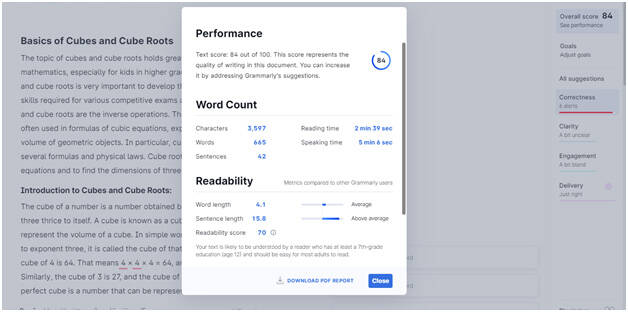The topic of cubes and cube roots holds great significance in mathematics, especially for kids in higher grades. The concept of cubes and cube roots is very important to develop the important mathematical skills required for various competitive exams and higher studies. Cubes and cube roots are the inverse operations. The concept of Cube roots is often used in formulas of cubic equations, exponents, and to find the volume of geometric objects. In particular, cube roots are often applied in several formulas and physical laws. Cube roots are applied to solve cubic equations and to find the dimensions of three-dimensional objects.
Introduction to Cubes and Cube Roots:
The cube of a number is a number obtained by multiplying the number three thrice to itself. A cube is known as a cube because it is used to represent the volume of a cube. In simple words, when a number is raised to exponent three, it is called the cube of that number. For example, the cube of 4 is 64. That means 4 × 4 × 4 = 64, and it can be written as 4 ^3. Similarly, the cube of 3 is 27, and the cube of 5 is 125, and so on. A perfect cube is a number that can be represented as the product of three same or equal integers. For example, 216 is a perfect cube because 6 × 6 × 6 = 216.
Cube of Numbers and Fractions
To find the cube of a number or a fraction, multiply the number or fraction by itself, then again multiply the result obtained by the original number or fraction itself. The cube of a positive number is always positive, and a negative number is always negative. For example, to find the cube of -2, we have to multiply -2 three times which is (-2) × (-2) × (-2). We will first find the value of (-2) × (-2), which is 4. Now, we will multiply the result again with 2 × (-4), which is -8. Hence, the cube of the negative number ‘-2’ is ‘-8’.
Definition of Cube Roots:
The cube root of a number is multiple of that number which, when multiplied thrice, gives the original number. It is inverse to the cube of a number and can be obtained by using prime factorization. For example, 27 is the cube of 3, and 3 is the cube root of 27. Unlike square roots, cube roots have negative values, and thus, perfect cubes can also have negative values, whereas perfect squares cannot have a negative value. For example, a cube root of – 8 is -2. Because 8 is a perfect cube, as 8 = 2 x 2 x 2.
How to find the cube root of a number?
To find the cube root of a number, you have to find a number that, when multiplied thrice to itself, gives the original number. There are various methods to find the cube root of a number, like repeated estimation. We can find the cube roots by using the prime factorization method. Here are the steps to find the cube root of a number using the prime factorization:
- Step 1: Calculate the prime factors of the given number by using the Prime Factorization method.
- Step 2: Group the factors in three, such that each number of the group is the same.
- Step 3: Multiply one factor from each group, and the resultant number will be your answer.
If there are factors left that cannot be divided equally into groups of three, it implies that the given number is not a perfect cube.
Conclusion:
Cube roots are handy in learning some basic math skills for algebra about cube numbers. Therefore it is important to gain this important skill through practice. Cuemath offers various learning resources for students to learn math interestingly. You can easily find some interactive cubes and cube roots worksheets for students to practice this topic with ease.



